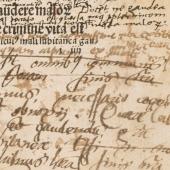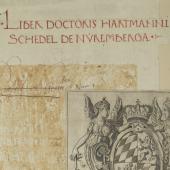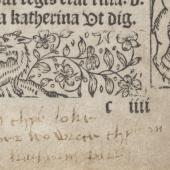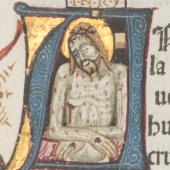'The book having passed through the noblest of hands'
Private lives of print
Early owners, both rarefied and everyday, often left their names on the books they owned. The wealthy might pay to have coats of arms incorporated into the decoration of the opening page, but lesser mortals had to be content with recording their names in a more mundane fashion, occasionally encoded in a rebus or monogram, or embellished with a Latin motto. The fortunes of these inscriptions in succeeding centuries often depended on the eminence of the inscriber: later collectors washed out marks left by the humbler owner, but paid enormous sums for those which could be attributed to the great.
A book’s provenance is today recognized as central to our understanding of its use, movement, audience and reception. In grouping and classifying the sorts of books owned by men and women of different classes and social backgrounds, by clergymen and laymen, medics and artisans, students and merchants, we can infer much about the way books were marketed, traded and used. In this endeavour, the scribbles of a schoolboy are as valuable as those of a king.



